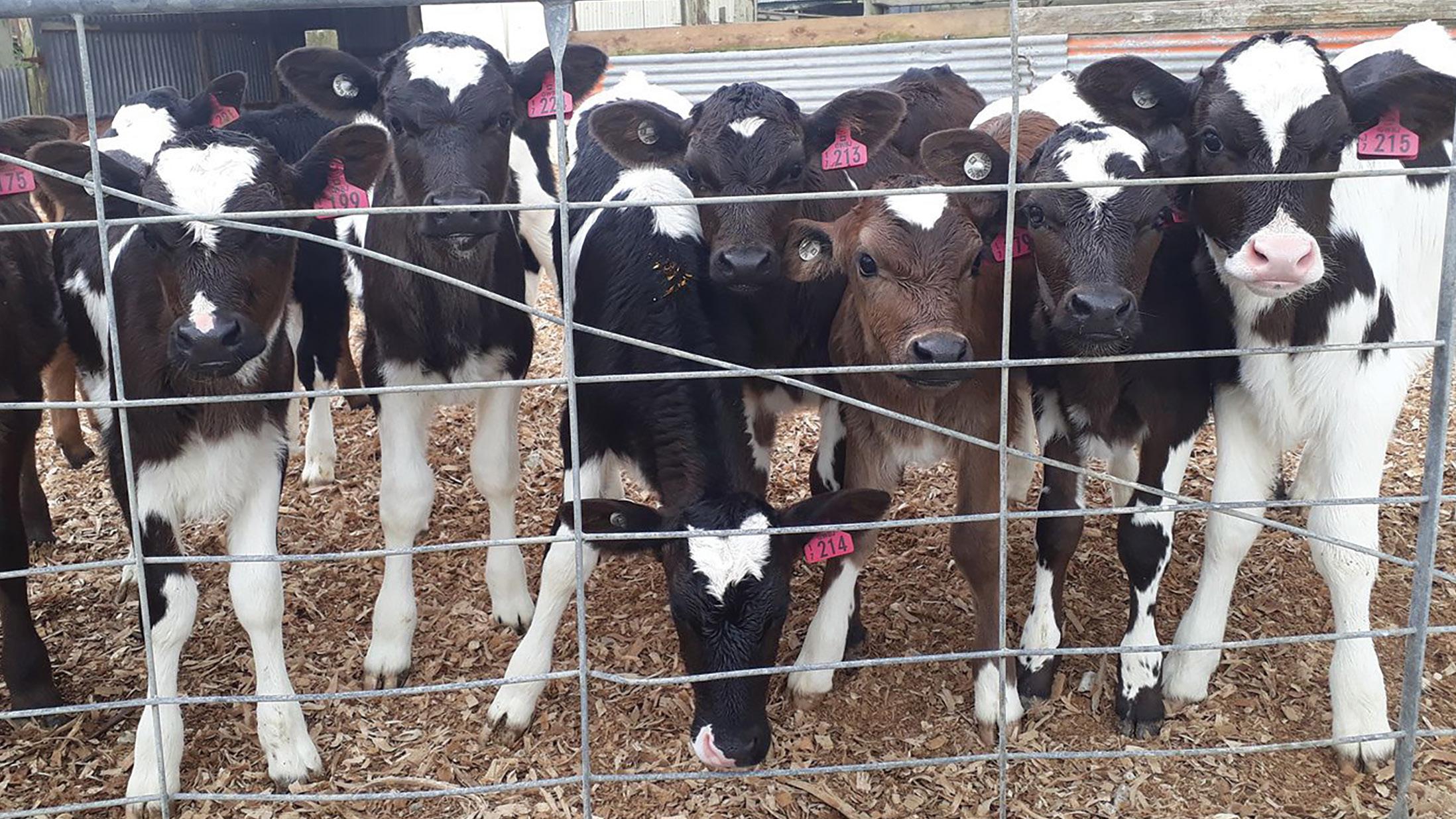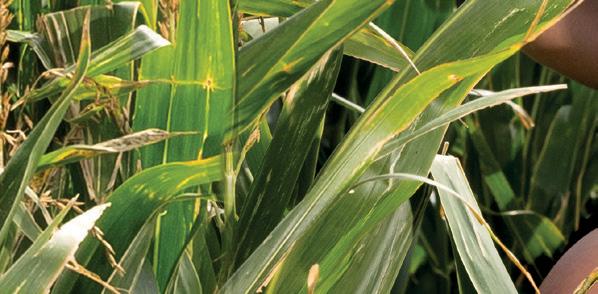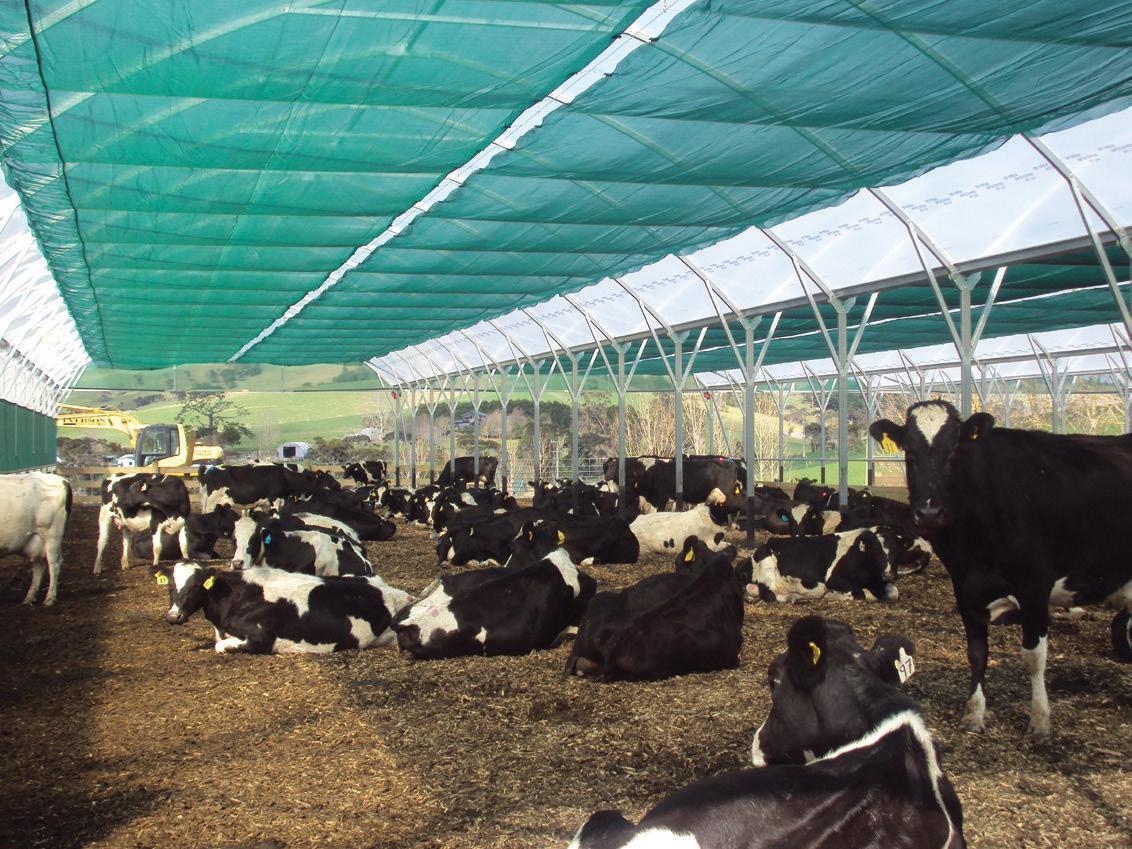
7 minute read
Speedy reaction to illness
Words and photos by: Karen Trebilcock
Just like us, young calves need social distancing in their bubble too.
Balclutha-based vet Olivia Hickman of Clutha Vets says that to stop the spread of diseases in calf sheds, groups of young calves should not be in contact with other groups.
Having an “all in all out” policy helps reduce the risk of spreading disease through the different age groups. That means using solid barriers such as plywood instead of the usual netting, especially the sick-calf pen.
The list of symptoms calves display when they are ill is short and easy to spot. Unwell calves will at first not want to feed, or will feed less than normal.
“They may also have a cold nose and can look a bit mopey.
“Scours (diarrhoea), which can be white or yellow or watery and may contain blood, usually follows.”
Dehydration was the main concern following scours.
“Scours will progress to unwillingness to stand and then they will eventually lie flat.
“You don’t want them to get to that stage, so acting fast is best.
“From not wanting to drink to lying flat and unresponsive can occur in a few hours. That’s how fast it happens.”
Olivia says calves that aren’t feeding and are scouring should be isolated from others and given electrolytes as soon as possible.
“Sometimes you will see a calf that’s off its feed in the morning and fine in the afternoon, but if it’s still not feeding in the afternoon and isn’t looking right you should act.”
Having the same person feeding the calves every day makes it more likely these unwell calves will be spotted.
It is easy to tell if a calf is dehydrated.
“The eyes look sunken and if you pinch the skin on its body it doesn’t go back down. Over the neck tends to be the easiest place to assess this.
“The more dehydrated it is, the higher the peak. If you’re not sure, do the same on a well calf and you will see the difference.
“Also if you put your finger in its mouth the gums will be dry and the salvia will feel tacky.
“If a calf won’t suck, give the electrolytes through a tube, and make sure you know how to do this before you have to.
“You should have the electrolyte mixes and the equipment to tube feed a calf on hand ready at the start of calving.
“If you can, give it electrolytes morning and night and a milk feed in the middle of the day so it’s getting some nourishment.”
The reasons calves get sick are more complicated than the symptoms.
It could be from a virus such as a rotavirus or a coronavirus or from bugs such as cryptosporidia and coccidia.






Balclutha-based vet Olivia Hickman of Clutha Vets.

The only treatment for the viruses is isolation to stop the spread of the disease, and rehydration. Cryptosporidiosis and coccidiosis have treatments, so if your calves are affected by either bug talk to your vet.
“With viruses, prevention is always best. So if you know you have a problem make sure your cows are vaccinated and ensure your calves are getting two to four litres of gold quality colostrum in their first 12 hours.”
Gold colostrum comes from the first milking.
“Also keep everything clean – milk feeders, water and hard feed containers and the bedding in your calf pens.”
If it is not a virus it is most likely bacteria such as E.coli or salmonella. Antibiotics will be needed in these cases.
“It can be difficult to tell whether it’s a bacterial infection or a virus by looking at the calf, so if your animals aren’t responding to electrolytes then it is time to call the vet.
“We can test faecal samples quickly and find out what’s wrong.”
The second symptom is an inflamed navel.
“Navel ill is when a calf gets a bacterial infection through the navel so it’s important to spray the navel with an iodine and alcohol mix when it’s born and for the next few days until the navel is dry.
“If the navel is infected, the infection can pass up into the body and get into the liver. Sometimes the calf will keep
Give me the best start

BioStart Calf Prebiotic for raising healthy calves
BioStart Calf contains five strains of fermented bacteria to boost immune function, fight disease causing organisms and rennet to reduce the likelihood of scours.
BioStart Calf supports early rumen development and increases live weight gain.
Call BioStart 0800 274 5243 or visit www.biostart.co.nz Available from leading rural retailers and vets
GOOD SIGNS:
• Clean noses: clear of discharges, moist and cool • Alert and responsive ears • Shiny, supple coats • Waggling tail when feeding: a sign of health and enthusiasm.
EARLY WARNING SIGNS - anything out of the ordinary. • Poor appetite: a sure sign that something is wrong. • Panting: a higher breathing rate than normal can indicate a high temperature caused by an infection.
What is “normal” varies with age; at 4 days normal is 56 breaths/minute; 14 days – 50 b/m; 35 days – 37 b/m. • Raised rectal temperature check: above 39.7ºC indicates an infection. • Coughing: could be a sign of high ammonia levels in bedding, which predispose housed calves to pneumonia.
Easily fixed by improving ventilation and adding fresh layers of bedding material every 3-4 days from week 3 onwards. • Wet tails and dirty hocks: an indicator of scours • Unusual posture or behaviour: indicates discomfort, possibly navel infection, gut problems, physical damage. • Calves which are ‘surviving, not thriving’ - likely grouped as ‘slow feeders’, ‘fussy feeders’, ‘lazy’, slow to walk to feeder. • If a calf’s pinched skin is slow to return to normal it may be dehydrated and need electrolytes • Run your hands over calves as they feed to detect any thin calves early and be proactive in trying to determine what is wrong - mild infections, mouth ulcers, or lameness which could easily go undetected.
Iodine spray for calf navels.


Electrolyte mixes and feeders. drinking until it is quite ill so you have to keep an eye on the navel to make sure everything is as it should be.
“An infected navel will feel thickened. It can look like a hernia and will feel hot.
“It will need to be lanced and flushed to clear the infection and the calf will need a course of antibiotics, so again you may need to call your vet.”
Calves overseas kept in confined sheds were more likely to get pneumonia than calves here but Olivia says it is still something to watch for.
Pneumonia is a bacterial infection in the lungs, which can be treated with antibiotics. In young calves it is caused by dampness and poor ventilation.
Symptoms are nasal discharge, coughing, difficulty breathing, a high temperature (a warm, dry nose) and not wanting to feed.
Olivia says most farmers get through calving with no deaths or very few.
“If you are getting a high number of deaths you need to look at your systems – check calves are getting colostrum, pens are disinfected regularly, and the milk they are getting is clean.
“Also make sure calves are born in a sheltered, dry area. The best start you can give them helps them to stay healthy.”
Ill calves should be assessed and euthanised if they are not responding to treatment.
She says when things go wrong it can happen very quickly.
“One day there is just a few not feeding and then the next day there could be a lot very sick. It can become a nightmare very easily.
“Ask for help.”

Part 5 - Animal Health
www.youtube.com/ watch?v=2BRpXmR6xfQ
Beat the seasons!
Built on-site from $550 per cow!*


FREE RANGE LOAFING BARNS FEEDPAD SHELTERS “Protection for your valuable pasture and stock, - until the cows come home”
FREE PH 0508 733 728 www.redpath.co.nz 31 Email: sales@redpath.co.nz











